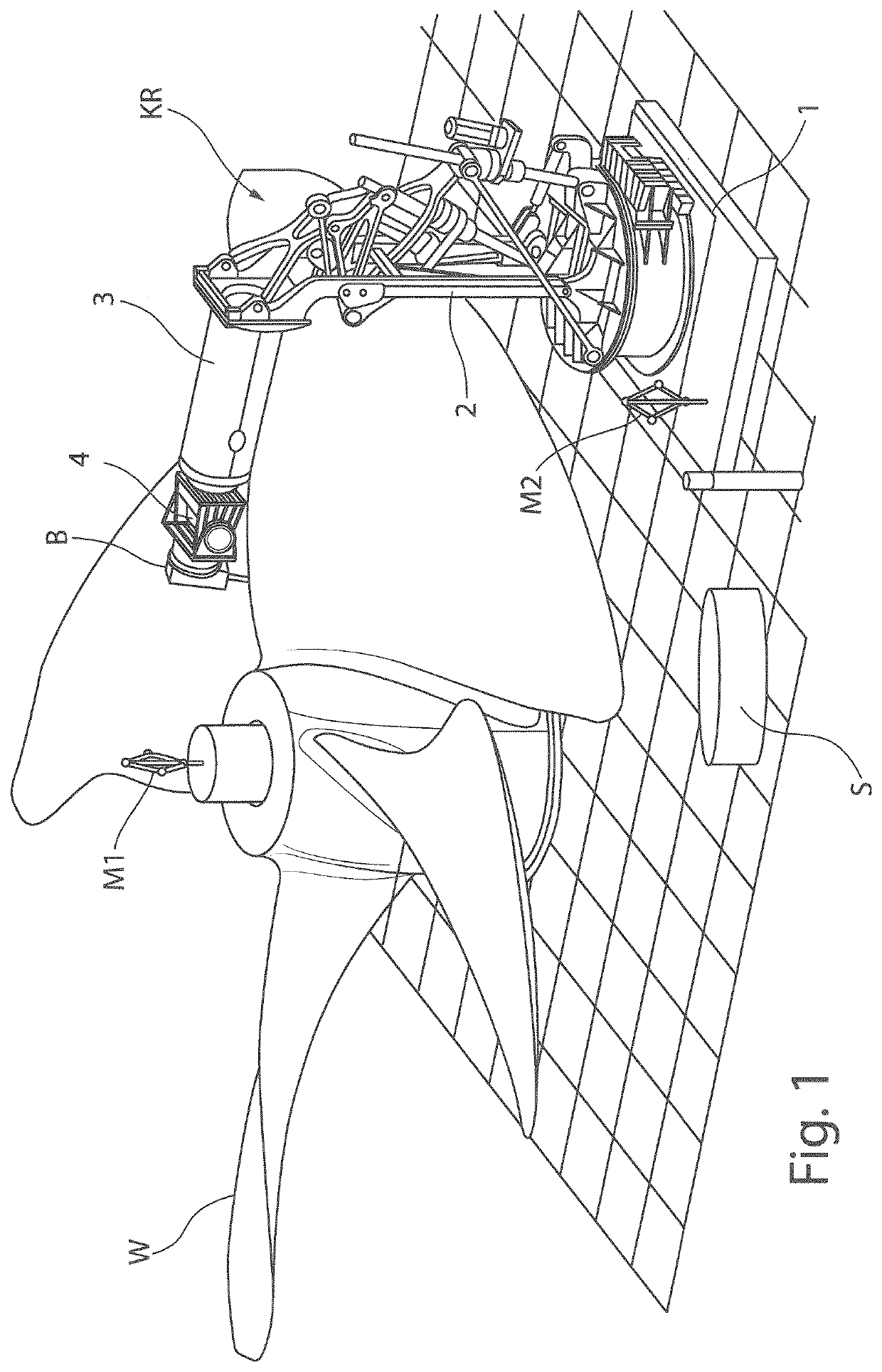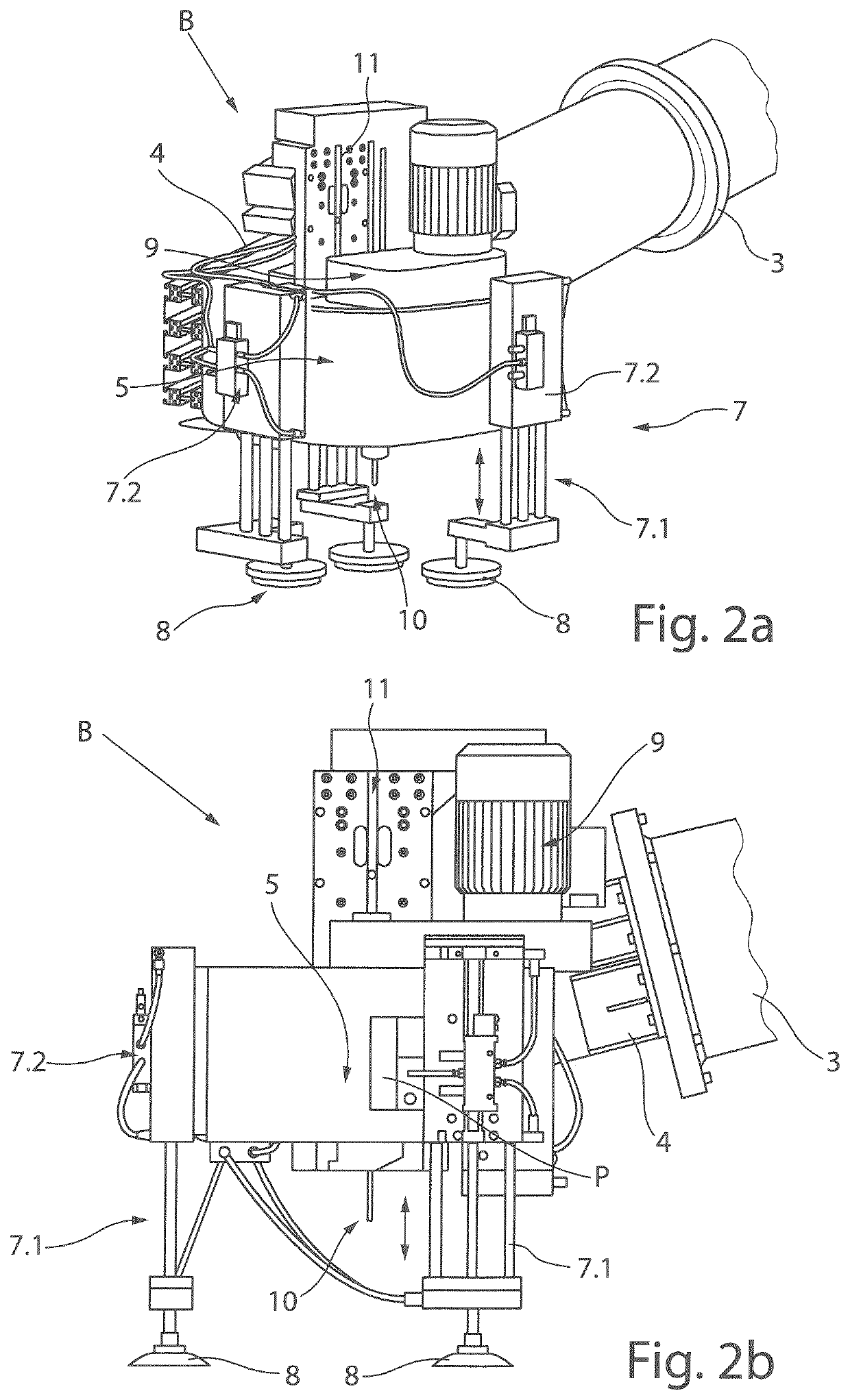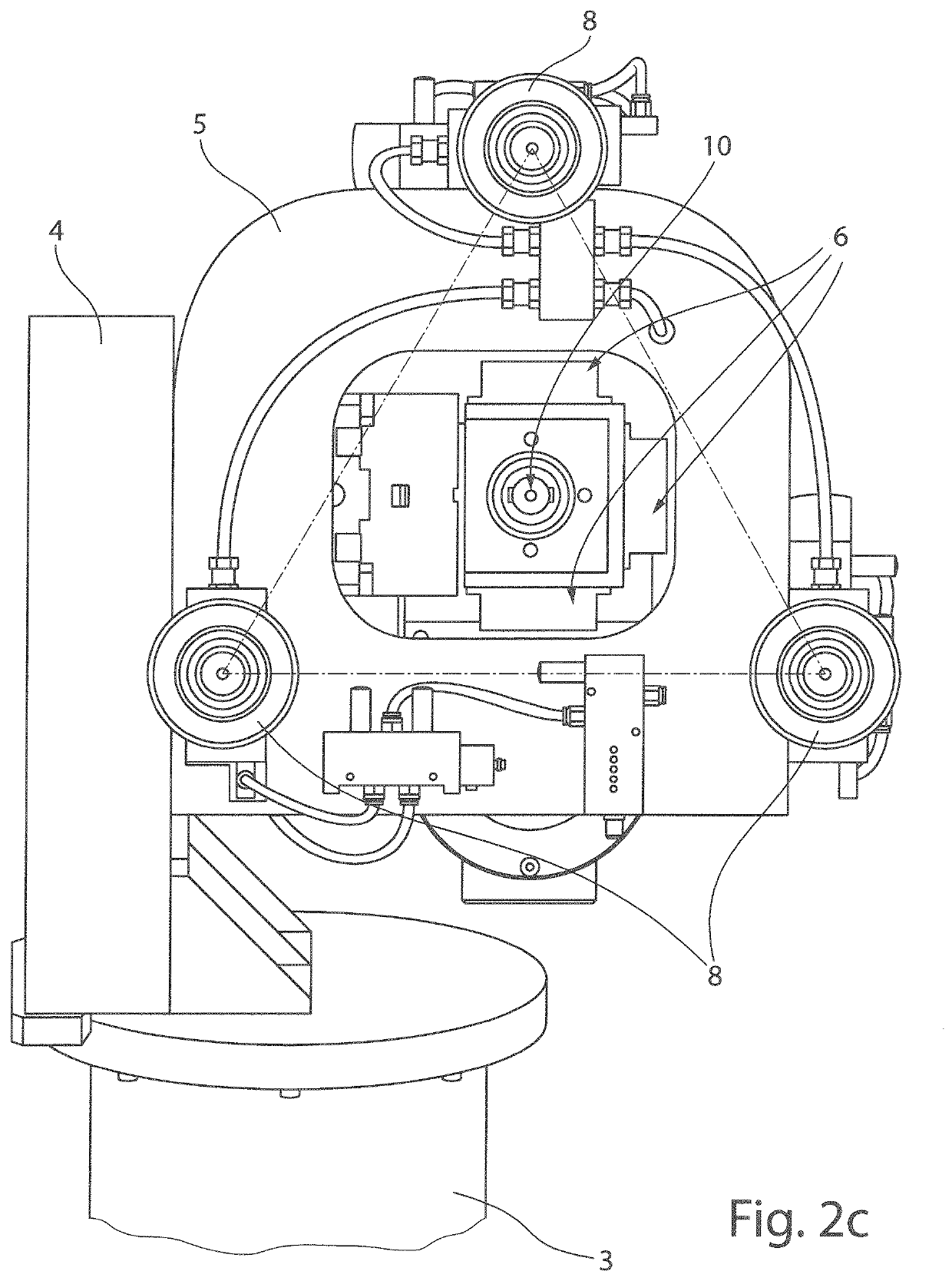Method and arrangement of introducing boreholes into a surface of a workpiece mounted in a stationary manner using a boring tool attached to an articulated-arm robot
a technology of introducing boreholes and boring tools, which is applied in the direction of turbines, manufacturing tools, mechanical equipment, etc., can solve the problems of low absolute accuracy of long kinematic chains, low machining speed and machining accuracy, and difficulty in using industrial robots such as such for the purpose of machining workpieces, etc., to achieve the speed with which drilling operations can be carried out, the effect of improving quality and high degree of precision
- Summary
- Abstract
- Description
- Claims
- Application Information
AI Technical Summary
Benefits of technology
Problems solved by technology
Method used
Image
Examples
Embodiment Construction
[0031]FIG. 1 shows a workpiece W in the form of a ship's propeller that is to be machined, which is to be provided with boreholes at certain predefined machining locations. Due to its size and the surface of workpiece W, which consists mainly of freeform surfaces, the only apparatus suitable for post-machining the workpiece is a large-scale, vertical articulated-arm robot KR with a boring arrangement B attached to the end face of the kinematic chain thereof, which has two arm members 2 and 3. Articulated-arm robot KR, which is described in full detail in document DE 10 2013 018 857 A1, is equipped with a robot arm which is secured to a base 1 that is rotatable about the vertical axis. The robot arm has two arm members 2 and 3 arranged one after the other in the manner of a kinematic chain, with which the first arm member 2 is mounted on base 1 to pivot about a second axis aligned orthogonally to the vertical axis. The second arm member 3 is attached to the first arm member 1 to pivo...
PUM
| Property | Measurement | Unit |
|---|---|---|
| size | aaaaa | aaaaa |
| diameter | aaaaa | aaaaa |
| diameter | aaaaa | aaaaa |
Abstract
Description
Claims
Application Information
 Login to View More
Login to View More - R&D
- Intellectual Property
- Life Sciences
- Materials
- Tech Scout
- Unparalleled Data Quality
- Higher Quality Content
- 60% Fewer Hallucinations
Browse by: Latest US Patents, China's latest patents, Technical Efficacy Thesaurus, Application Domain, Technology Topic, Popular Technical Reports.
© 2025 PatSnap. All rights reserved.Legal|Privacy policy|Modern Slavery Act Transparency Statement|Sitemap|About US| Contact US: help@patsnap.com



